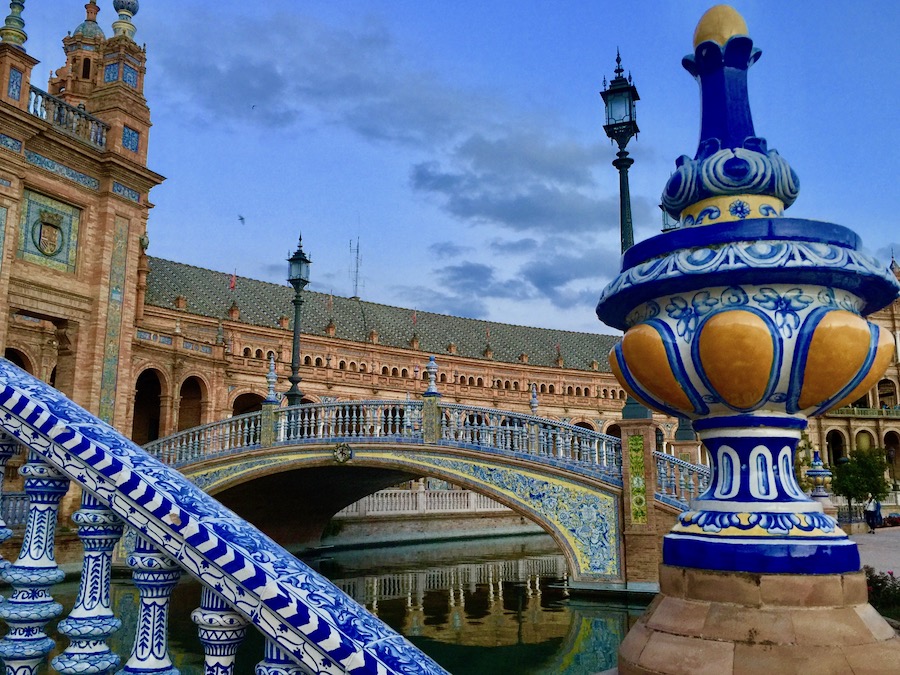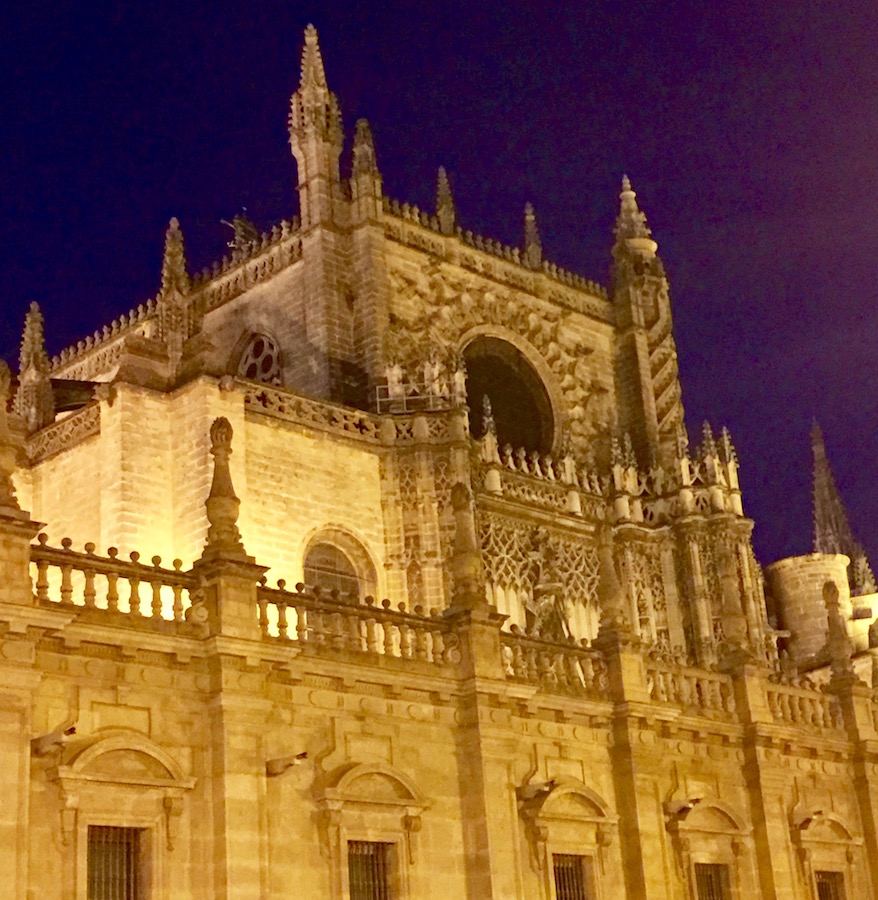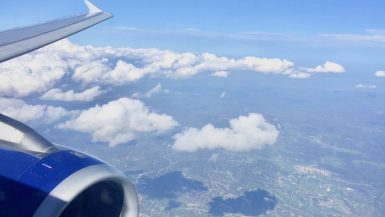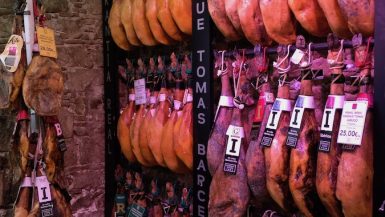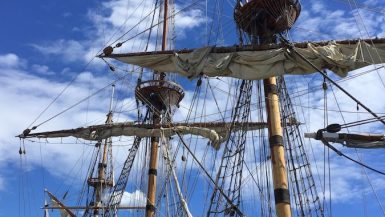April 22, 2016
Living so close to the Cathedral and Royal Alcazar (pronounced Al-ca-thar) for the better part of three days, we decided it was high time we saw the insides of these architectural wonders. The Alcazar, originally built as a Moorish Palace, still functions as a royal palace today.

We were fortunate to reserve tickets a few days in advance to view the royal upper apartments. Our food tour guide, Jaimie, had been very impressed with our luck. It seems he hasn’t been able to get a ticket in the three years he has been in Sevilla. I guess we were living under a lucky star.
The upper palace was our first stop of the day. Along with 13 other individuals, we passed through a second security screening and then met a security guard who escorted us through the apartments while we listened to a very enlightening audioguide.
There are 15 rooms open to the public tour including reception rooms, the official dining room, the billiards room, and the audience halls, all decorated with fancy furniture (think Versailles), gold embellishments and portraits of long deceased royalty. It seems the Royal wet nurses were also important as five of them rated portraits in one of the audience halls. If you can book a space on the tour, it is worth it – particularly to get away from the crowds downstairs. Unfortunately, photography was strictly prohibited. The security guard shadowing us made sure we fully complied.

Back down among the masses, we picked up a separate audioguide and started touring the many rooms of the lower palace. The Moorish influence is seen throughout the palace in its use of color, tiles, arches, arches within arches, nature, and water (lots of fountains). The Christian influence is seen in courtyards, gardens where ladies gathered and did whatever ladies did in that time, grand halls where explorations of the New World were devised and the riches taken from the New World were stored (Queen Isabel debriefed Christopher Columbus in the Salon Del Almirante), and alter pieces and tapestries – lots of tapestries.
There are rooms upon rooms to explore, secret passages used by the King to escape the paparazzi to locate, and endless gardens to wander. For those wanting time to contemplate or rest your feet, there are numerous benches for sitting and window ledges on which to perch. We stayed a couple of hours but could have easily spent a good part of the day checking out the nooks and crannies. We’ll have to go back on our next trip to Sevilla (and there will be a future trip, perhaps even a month-long, or more, stay in retirement).
Since we were so close to the apartment, we swung by to offload jackets (the sun had made an appearance and the clouds had scattered) and use a not so public aseo (bathroom in Spain). It was then on to explore the Cathedral, the third largest church in Europe.
We’d previously bought our combo ticket at the Church of the Savior (good choice on our part), so we were able to skip the queue, much to the chagrin of a sea of humanity. Through another security checkpoint and we were inside the vast Cathedral.

As with many churches, the Cathedral stands on the site of a former mosque torn down by the Christians. When they decided to build the church in 1401, they exclaimed that they were going to build a cathedral so massive that “anyone who sees it will take us for madmen.” They were right.

The inside was a little starker than I thought it would be, all grey stone and marble; however, the opulence of the high altar and the many side chapels more than made up for the bare walls. The altarpiece of the high alter is like nothing I’ve seen before (and I’ve visited a lot of churches). It is gigantic, standing 65 feet tall, and recounts the life of Jesus in 44 intricately carved scenes using an ungodly amount of gold leaf. While it is beautiful, it’s a little busy for my taste and a little gaudy (not Gaudi).
I only wish we had come for mass because that’s the only time they play the 7,000 pipe organ.

Christopher Columbus is supposedly entombed in the Cathedral and there’s a really big crypt to make the point; however, Cuba and the Dominican Republic also claim to have the tombs of Christopher Columbus. DNA testing done by all three countries on the remains in their country has tested positive. So, are we thinking multiple personalities?

We wandered from chapel to chapel, through the treasury with its statues, candelabras and silver/gold pieces, making our way to the entrance of Giralda Bell Tower.
After walking up the bell tower in Córdoba, we had decided we wouldn’t walk up to the top of this tower, but once we got to the entrance, we changed our minds. The top of the bell tower is up 35 ramps and 17 stairs. The ramps were built back in the time when it was a minaret for the mosque so that the person who did the call to worship could ride a donkey to the top. We thanked the donkey all the way to the top.
It was still a tough climb for the adults but, of course, all the school children ran up and then back down with ease. The climb was worth the effort as the views of the city were spectacular. We were even able to spot our apartment and terrace down below.
Since we’d built up an appetite, we returned to Ovejas Negras, our favorite tapas place by far. The hostess welcomed us back, but there weren’t any tables available, so we perched on stools at the bar. Our waiter was hip and funny – I think he liked to make the Americans laugh. Anyway, we ordered the slow-braised pork cheeks, since we’d both been talking and dreaming about them, the spinach mushroom lasagna, and the Russian salad. Everything was so good. The pork cheeks were as tender and flavorful as the first time. We will miss you wonderful little tapas bar! Upon leaving, the bartender even gave us the name of his favorite restaurant in Madrid for our next stop; such friendly people here in Sevilla.
After a nap, we went in search of Plaza de Espana, part of a beautiful park built for the 1929 International Fair. We got a little lost as our map reading skills were questionable, but in doing so, we were able to wander among some absolutely gorgeous architecture and parks. The people watching opportunities were endless as it was the peak paseo time on a glorious Friday evening.

We passed by the university and the fancy Alfonso XIII hotel, where our food tour mate Jung had stayed on the company dime, which is beautiful on the outside and I’m sure even more opulent on the inside (I’ve been afraid to google the price per night). The nearby Maria Luisa Park is a cool and soothing stroll.

And then you enter Plaza de Espana. Flanked on either end by tall balconied towers with a long main pavilion joining the two, a curved canal runs through the plaza where you can rent a boat for a leisurely row. It was early evening and getting dark, so there weren’t many people about but we could envision spending hours in the plaza watching the world go by.
Nighttime had fallen, so we walked slowly back to the apartment savoring our last few hours in Sevilla. As we drew closer to home, the pedestrian zones became busier as locals and tourists came out for drinks and a late dinner. None for us though, as we needed to pack up, say goodbye to the apartment, and get ready for the next leg of our trip – Madrid.



























